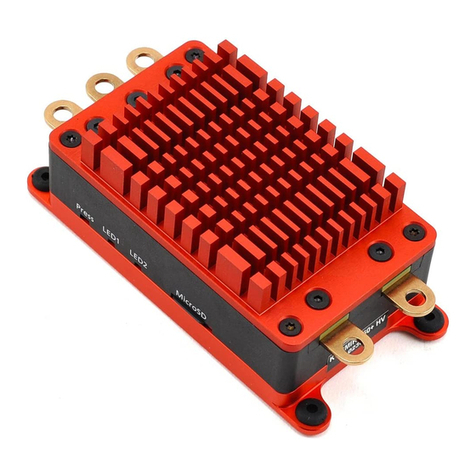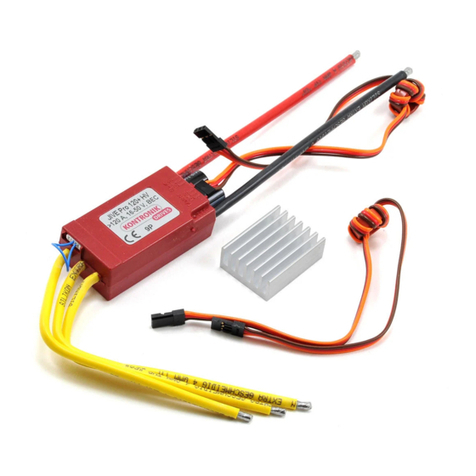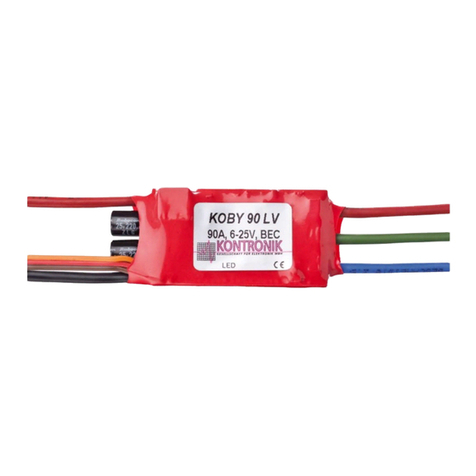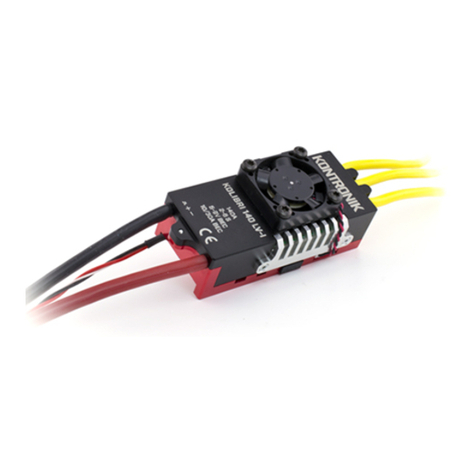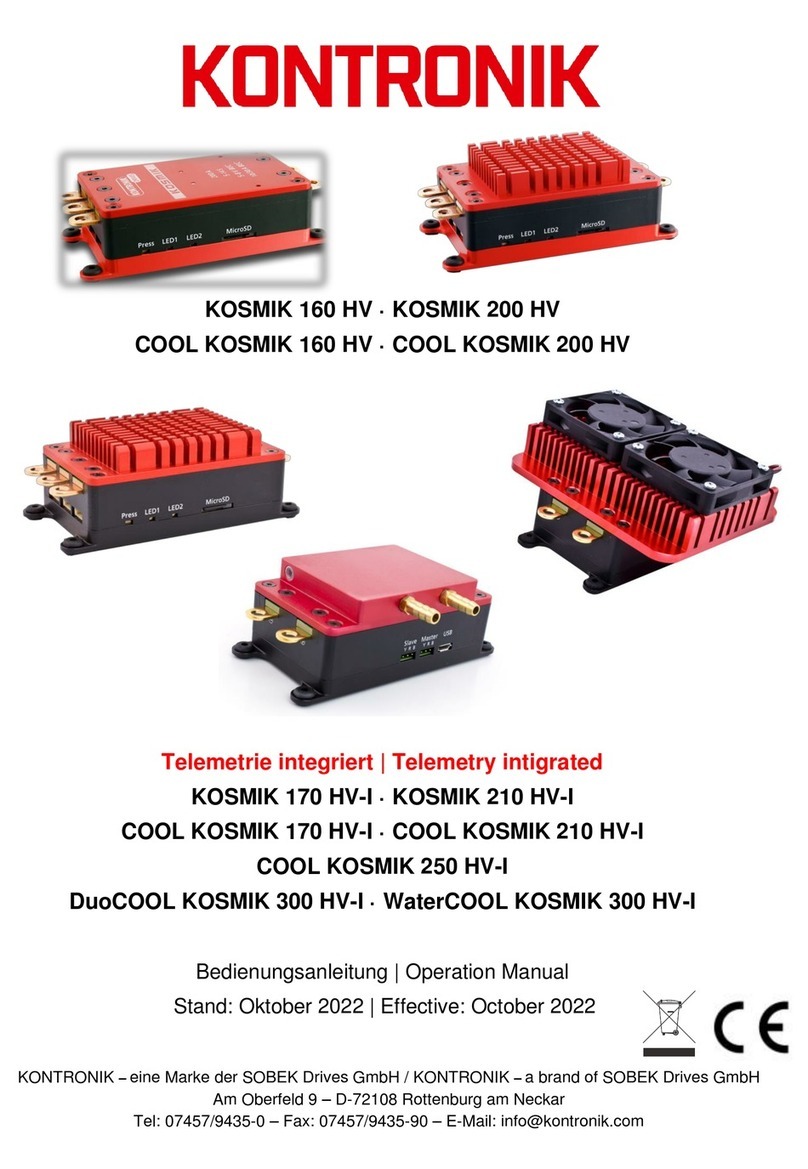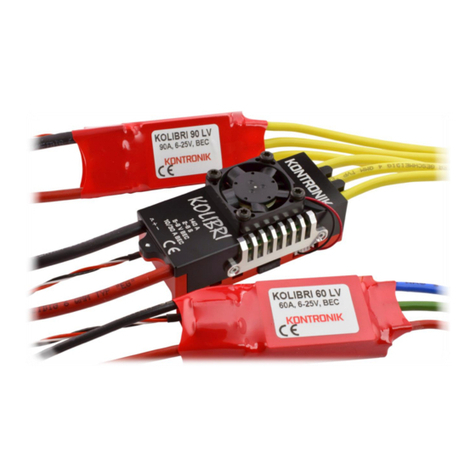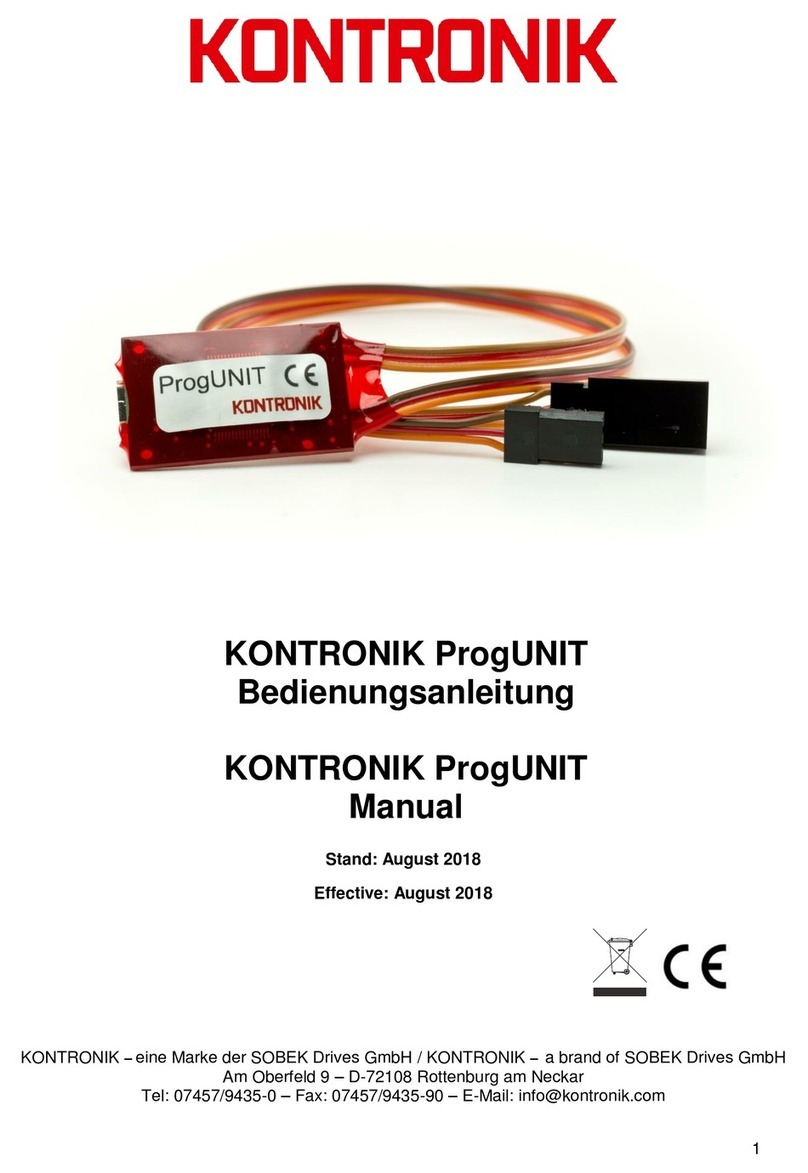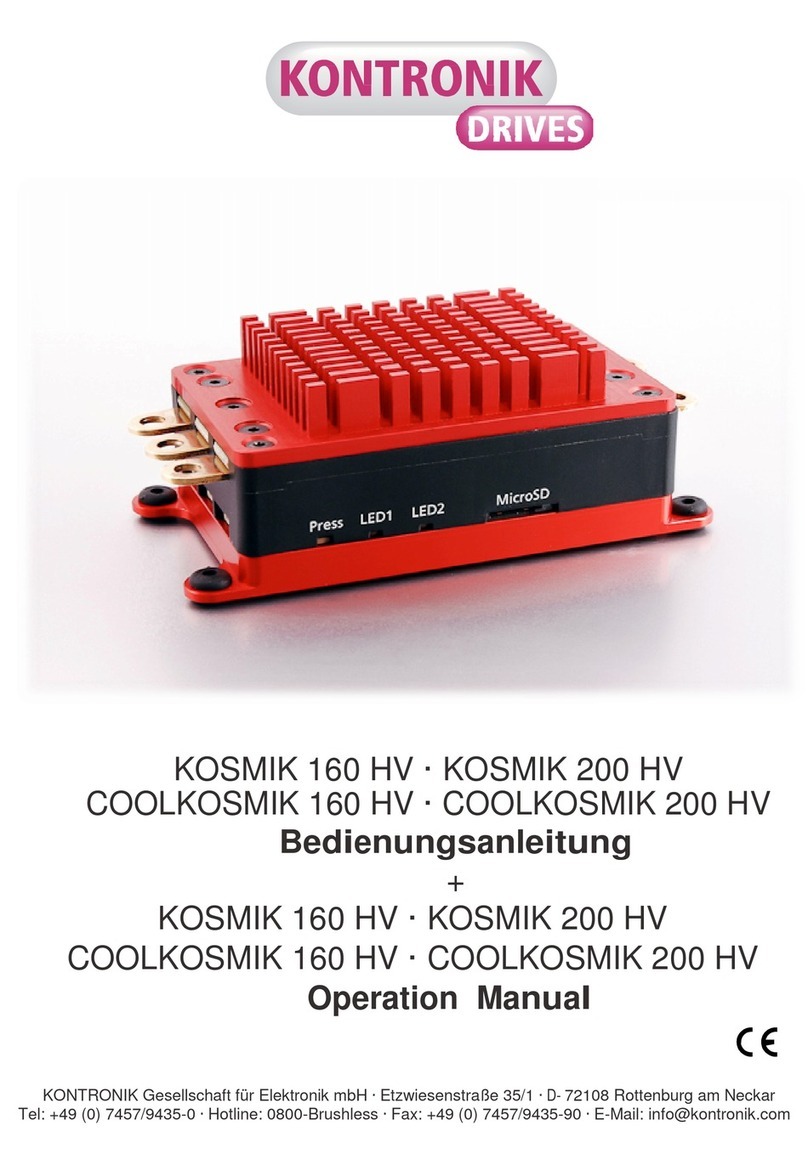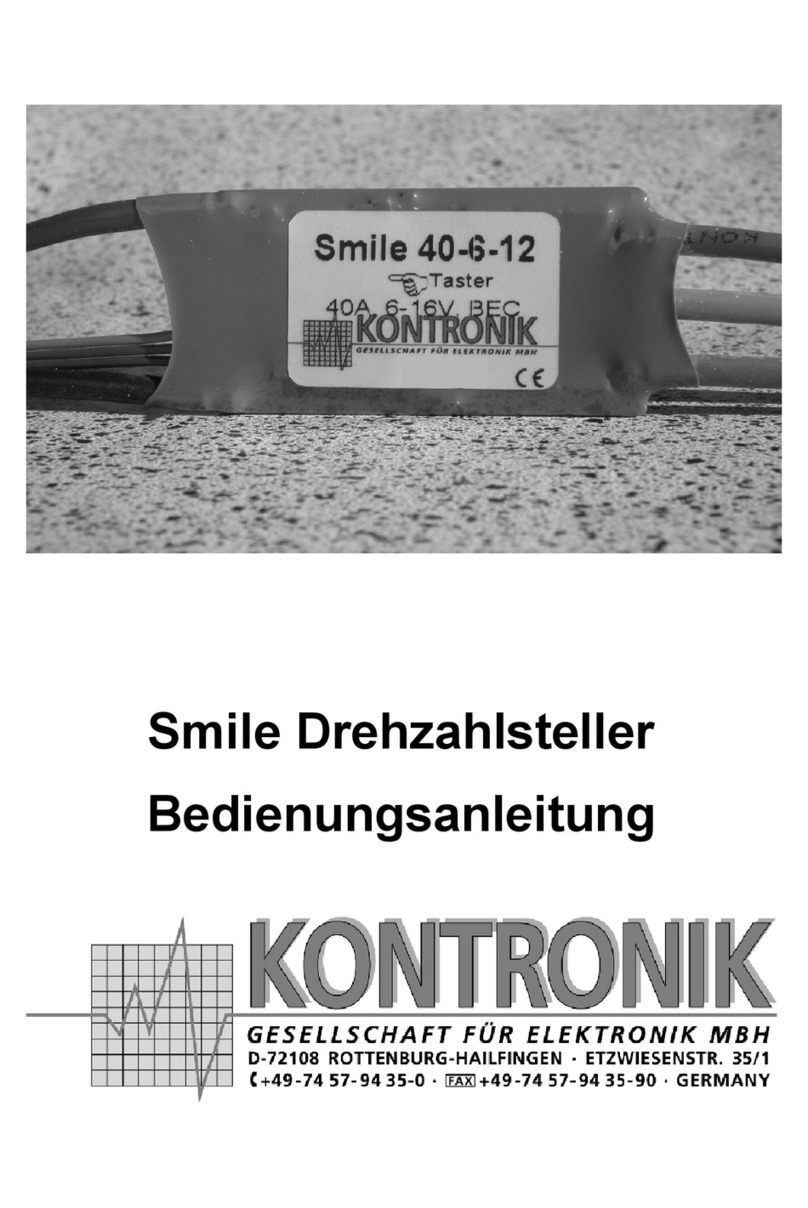
Technical data of the BEAT speed controllers
The BEAT speed Controllers are designed for brushless motors. They work without
sensors in the motor and have full part load capability. They are very sensitive and
have a soft and yet very fast start up. The built-in RPM control optimizes the app-
lication with helicopters and the mode programming helps essentially to program all
the various parameters. The Car Mode 2 allowed to drive back and forth.
BEAT controllers with BEC, 6-12 cells:
BEAT 40-6-12
40 A continuous current, 50 A for 15 sec
14 g / 33 g without / with cables - 52 x 26 x 7,5 mm
BEAT 70-6-12
70 A continuous current, 90 A for 15 sec
21g / 37 g without / with cables - 52 x 26 x 11 mm
BEAT – controllers with opto, 6-18 cells:
BEAT 40-6-18
40 A continuous current, 50 A for 15 sec
14 g / 33 g without / with cables - 52 x 26 x 7,5 mm
BEAT 55-6-18
55 A continuous current, 70 A for 15 sec
14 g / 33 g without / with cables - 52 x 26 x 7,5 mm
BEAT 80-6-18
80 A continuous current, 100 A for 15 sec
21g / 37 g without / with cables - 52 x 26 x 11 mm
BEAT FAI 7/10
150 A continuous current, 200 A for 15 sec
28g / 40 g without / with cables - 52 x 26 x 12 mm
BEAT – controllers with opto., 8-24 cells:
BEAT 40-8-24
40 A continuous current, 50 A for 15 sec
14 g / 33 g without / with cables - 52 x 26 x 7,5 mm
BEAT 60-8-24
60 A continuous current, 70 A for 15 sec
21g / 37 g without / with cables - 52 x 26 x 11 mm
BEAT FAI 24
150 A continuous current, 200 A for 15 sec
28g / 40 g without / with cables - 52 x 26 x 12 mm
BEAT – controllers with opto., 8-30 cells:
BEAT 30-8-30
30 A continuous current, 38 A for 15 sec
14 g / 33 g without / with cables - 52 x 26 x 7,5 mm
BEAT 50-8-30
50 A continuous current, 60 A for 15 sec
21g / 37 g without / with cables - 52 x 26 x 11 mm
BEAT FAI 27
100 A continuous current, 150 A for 15 sec
28g / 40 g without / with cables - 52 x 26 x 12 mm
